The story was first published in the Wonder Stories July, 1934 issue, graced with a Frank R. Paul cover, the story also appeared with a Frank R. Paul interior illustration (see below), giving us the first ever look at Tweel, the unprecedented alien featured in the story.
A Martian Odyssey would be published in a specialty memorial collection and reprinted, as part of the Science Fiction Hall of Fame feature (!) in Startling Stories
And now (spoiler alert) a summary of the story.
The Ares, captained by Harrison (Captain & Astronomer) and crewed by Jarvis (chemist and protagonist), Putz, the engineer and Leroy, the biologist, has made the first (human) landing on Mars.
The story opens as Jarvis returns to the Ares, having recently been rescued following the crash landing of an auxiliary rocketship he’d been flying on a reconnaissance mission.
 We are offered an info-dump that quickly brings us up to speed on the technological developments and space expeditions prior to this first Martian landing: atomic power has been harnessed for less than 20 years; the first spaceflight using atomic motors took place less than a decade prior; a flight to Venus has been lost and only a handful of landings on the Moon have taken place. (Weinbaum’s vision of the development of space exploration was commonly shared through the 50s; individuals or private consortiums would perfect a propulsion system – usually atomic in nature – and take to the planets, the Moon first, then Mars and Venus, then the asteroids and the outer planets. In many ways their vision was informed by the course that developing air travel took, which is probably the model for their speculations.)
We are offered an info-dump that quickly brings us up to speed on the technological developments and space expeditions prior to this first Martian landing: atomic power has been harnessed for less than 20 years; the first spaceflight using atomic motors took place less than a decade prior; a flight to Venus has been lost and only a handful of landings on the Moon have taken place. (Weinbaum’s vision of the development of space exploration was commonly shared through the 50s; individuals or private consortiums would perfect a propulsion system – usually atomic in nature – and take to the planets, the Moon first, then Mars and Venus, then the asteroids and the outer planets. In many ways their vision was informed by the course that developing air travel took, which is probably the model for their speculations.)
We are also encouraged to view these four explorers as heroes; men willing to spend months in space, willing to endure long periods of strenuous training, all in pursuit of an uncertain and possibly deadly goal.
Jarvis is given a few moments to relax (he remarks upon how wonderful it is to breath real air again) after which the impatient crew demand to know what happened during his adventure. The fact that we are in for a bit of the extraordinary is foreshadowed by the captain’s demand to spill his guts “We don’t get a peep for ten days, and finally Putz here picks you out of a lunatic ant-heap with a freak ostrich as your pal!”
Jarvis relents and begins telling his tale in an annoyingly pedestrian manner to the rest of the crew. We however quickly come to realize that this is in fact a hard science fiction story; Jarvis discusses the operation of his auxiliary rocket in detail and complains that it stirs up so much dust that it interferes with observation. He reviews the presence of some kind of ubiquitous blobby plant life and confirms, via the observations made while traveling, the location of the Ares’ landing and, incidentally, displays a command of Marsography.
Here I must pause and mention that we have received two info-dumps inside of the first few hundred words of the story. By all that is Holy writ these days, this would certainly be considered a bounceable sin. On a quick surface read, that should be the fate of this story. But pause for a moment and consider the following: the first bit of dumping takes place within the third paragraph (following two short paragraphs of hook). It is a compact paragraph and is more introduction (to the characters) than straight info dump and not at all outside the short story conventions of that day. Shorts, particularly in the pulps, were apt to get the introductions out of the way as quickly as possible in order to leave room for the good stuff.
The second, more traditional info dump can be read as such – until one realizes this this drawn out delivery of common knowledge (to the crew) is actually Weinbaum’s subtle characterization of Jarvis. The man is tired, he’s just been rescued (from the surface of Mars!). Instead of being allowed to catch is breath, the crew are yammering for a story. Jarvis will comply, but he’s going to make the inconsiderate bastards suffer while he does. We, on the other hand, get to enjoy Jarvis’ little joke and, in so doing are all the wiser for it.
To continue. Jarvis finally explains that he was on the return leg of his trip when the atomic motor in his rocket stopped working and he made an emergency landing, cracking his face on the ship’s windshield in the process. In an exchange with Putz, the engineer (who is presumably the crew member responsible for care and maintenance of the atomic motors) it becomes clear that Jarvis possesses an acerbic and sarcastic whit.
Jarvis explains that he chose walking back (some 800 miles, a feat he would need to complete in 20 or fewer days in order to return to the Ares before her departure) rather than waiting; he jerry-rigged a water tank, grabbed supplies and headed off into the desert. This last exposition serves to remind us that gravity is lower on Mars, making Jarvis’ self-appointed trek much more plausible.
(I should here note that in that opening introduction, Weinbaum mentions that the crew had experienced “months spent in acclimatization chambers back on earth, learning to breathe the air as tenuous as that of Mars…”. This of course lets us know that pressure suits and tanks of breathable air are not required in order for humans to operate on the surface of Mars. This has been a silly concept – ever since Viking touched down on the Martian surface in 1976. In 1934, it still remained a hoped-for possibility.)
{An aside on tropes: By 1934, readers of science fiction in the pulps had become familiar with the “scientists & engineers crew” trope; most adventures into deep space featured a (all male) crew that consisted entirely of scientists and engineers (fit, athletic and widely read), usually one each representing biology, astronomy/physics, chemistry and engineering. Such a mix would prove quite capable at solving whatever alien mysteries might confront the team. Campbell introduced a three-man team with his Arcot, Wade and Morey stories (Mightiest Machine, Black Star Passes); Eric Frank Russel would poke fun at this convention with his Jay Score stories a decade later. Asimov used the convention with a pair of robotics engineers in the early 40s; the Captain Future tales work along the same lines.
Readers of the day would have been familiar with this convention and would have been equally familiar with the convention of giving the crew members varied national origins, along with approximated accents. While still present in the literature, this trope has faded over the years in favor of more detailed characterization and a lessening of the requirement to make every participant a scientist or engineer.
What is also important to realize is that readers back in the day would have known certain things about the characters merely based on their scientific affiliation: naturally Putz – the engineer – would be responsible for maintaining the auxiliary rockets; naturally the biologist would be pressed into service as medical officer & etc. Likewise, readers would assume other conventions regarding these characters based solely upon their chosen professions.
When Viking I and II touched down on Mars (I was there, watching JPL on television) it was both a sad and exciting day. One of the science fiction magazines of the day published an illustration that nicely summed up the feeling: it showed Viking I and a rock formation in the foreground; from a slightly different angle, that rock formation was actually John Carter and Woola, crouching in the desert.
Most SF fans of my generation (and earlier ones) revered Mars in a way that is probably unapproachable to so-called modern humans. Just about every author we read and respected had turned their hand to peopling the red planet – Brackett, Kline, Burroughs, Heinlein, Bradbury…If you knew where to look in the night sky you could usually go outside and see it hanging up there, waiting. Waiting for us.
But in 1934 the possibility of a fully inhabited Mars remained fresh and largely plausible.
Continuing: As Jarvis walks across the desert he discovers a relative of the blobby plant life discovered near the Ares’ landing site – but this variety moves. Described as a blade of grass with two tiny legs. As he crosses a canal (as “straight as a railroad on its own company map”: an anachronistic analogy, but one that neatly encompasses the nature of the canal as artifact) a living mat of the stuff we learn have been named biopods, parts in front of Jarvis and closes behind him like the red sea parting for Moses. It is a symbolic crossing of the rubicon. From here on in we enter the dream world of Weinbaum’s Mars.
The biopods themselves are an interesting way of conveying other-worldliness and the strange, a tried and true method that has been leaned on by SF authors since Burrough’s plant men and immortalized in Wyndham’s Day of the Triffids. Plants, in our earthly experience, are immobile and passive. Weinbaum’s biopods transition from the familiar (those around the landing site) to the strange and nicely foreshadow the ‘you ain’t seen nothin yet’ nature of the story.
Jarvis continues his trek and determines to descend a cliff that separates Thyle from Mare Chronium before preparing to sleep for the night (once again utilizing real Marsography to anchor the narrative in reality). Jarvis’ plans reveal that he intends to spend the night in the open, which is cold enough to engender frostbite on unprotected skin, but not so cold as the reality. If one accepts the barely breathable atmosphere of Mars, it follows that the nights won’t get as cold.
Completing his descent, Jarvis’ preparations for the night are interrupted by “…the wildest sort of shenanigans!”. Investigating, Jarvis comes upon Tweel, the aforementioned alien who is the apple of Campbell’s eye. As he relates to the crew “All I could see then was a bunch of black ropy arms tangled around what looked like, … an ostrich.” This form of non-descriptive description is characteristic of Weinbaum; it allows the reader to enter into the process of observation and discovery along with his characters.
Jarvis is entranced by this otherworldly spectacle of nature red in tooth and claw, determined not to interfere in the battle, until he notices that the ‘ostrich’ has a pouch hung around its neck. He concludes that it must either be intelligent – or the pet of intelligences – and steps in to assist.
There then follows one of the more remarkable first contacts in science fiction history.

Heretofore, such encounters were generally glossed over as most writers seemed to realize that devoting thousands of words to describing the process of learning to communicate would bore the reader. More often than not, the aliens possessed remarkable technologies – rays, beams, teaching machines, telepathy, that quickly and neatly rendered this narrative obstacle moot. (Or, just as typical, the alien is so much more intelligent than humans that a brief interlude of hand-waving and pointing at things while naming them is sufficient education to have them conversing around the campfire like Oxford dons in no time flat.)
Jarvis then delivers a description of Tweel: “The Martian wasn’t a bird, really. It wasn’t even bird-like, except just at first glance. It had a beak all right, and a few feathery appendages, but the beak wasn’t really a beak. It was somewhat flexible; I could see the tip bend slowly from side to side; it was almost like a cross between a beak and a trunk. It had four-toed feet, and four fingered things—hands, you’d have to call them, and a little roundish body, and a long neck ending in a tiny head—and that beak. It stood an inch or so taller than I, and—well, Putz saw it!” A nice touch at the end there, dismissing the reader’s doubt and incredulity with independent ‘proof’ of Tweel’s existence.
Jarvis and Tweel spend a moment or two staring at each other; Tweel then makes an open-handed gesture that Jarvis presumes is welcoming; he puts his gun away, Tweel approaches closer and the two become comfortable with each other.
Jarvis realizes that he’ll soon run out of daylight and sets about building a fire. He has difficulty getting it to light (thin atmosphere) and Tweel steps in with the intelligent ostrich version of a lighter, incidentally revealing that he possesses not just advanced technology, but, at least in this particular instance, technology superior to human tech. Jarvis goes on to describe Tweel’s pouch, using the exposition to further distinguish the alien’s technology from our own and cementing the concept that it is different and, seemingly, superior.
Then, sitting comfortably and companionably around the fire, Jarvis begins an attempted language lesson with Tweel. He begins the way most of us probably would, by pointing to himself and pronouncing his own first name – “Dick”. (Pointing to an object and naming it may be universally recognized by alien species that more or less resemble us – presuming that they hear in our vocalization range, see in our visual range and associate their manipulative appendages with objects the way we do – and presuming that pointing itself is not associated with something negative in the alien’s culture.)
Tweel seems to get it, pronouncing Jarvis’ name as “Tick” (Weinbaum works in the concept that Tweel may not be able to make the same sounds humans do), gives his own name as Tweel…or at least seems to.
“Then I pointed at him, and he gave that whistle I called Tweel; I can’t imitate his accent. Things were going smoothly; to emphasize the names, I repeated ‘Dick,’ and then, pointing at him, ‘Tweel.’
“There we stuck! He gave some clacks that sounded negative, and said something like ‘P-p-p-proot.’ And that was just the beginning; I was always ‘Tick,’ but as for him—part of the time he was ‘Tweel,’ and part of the time he was ‘P-p-p-proot,’ and part of the time he was sixteen other noises!
“We just couldn’t connect. I tried ‘rock,’ and I tried ‘star,’ and ‘tree,’ and ‘fire,’ and Lord knows what else, and try as I would, I couldn’t get a single word! Nothing was the same for two successive minutes, and if that’s a language, I’m an alchemist! Finally I gave it up and called him Tweel, and that seemed to do.
“But Tweel hung on to some of my words. He remembered a couple of them, which I suppose is a great achievement if you’re used to a language you have to make up as you go along. But I couldn’t get the hang of his talk; either I missed some subtle point or we just didn’t think alike—and I rather believe the latter view.”
This passage makes me think that Weinbaum’s story was the genesis of Campbell’s much discussed request.
It also marks a subtle shift in the relationship between Tweel, Jarvis and the reader. Up to this point in the tale, Jarvis has been our protagonist. Earlier we discovered that Tweel possesses technology in advance of our own and now we come to realize that Tweel’s intelligence itself exceeds our own: HE can understand US, but the reverse is obviously not true.
This also marks the point in the story at which it begins to become obvious that we are not being treated to a normal adventure tale and certainly not one that centers on the great white hope bringing culture and technology to the native savages. As we will soon see, it is the exact opposite of such tales.
Jarvis gives up on language and resorts to math (it is confirmed that Tweel and he agree on basic concepts like 2+2=4; Jarvis then begins to draw diagrams in the Martian sand.
Another brief aside: I don’t know about anyone else and most certainly not those of you who were born after Viking landed on Mars, but I distinctly remember the appeal of this scene: sitting around a campfire, on MARS!, under a chill and forbidding sky, the great weathered cliffs (as depicted by Bonestell in my mind’s eye) at my back, a friendly alien for companionship….a dream of a possible future, one that I would have been happy to experience personally. There it is again – the appeal of a Mars that never was and can no longer ever be. I am beginning to suspect that the absence of such thought pictures, ones that may be impossible for someone born and raised in an era in which Mars holds less mystery to imagine, may be the single largest obstacle to the continued future enjoyment of this story.
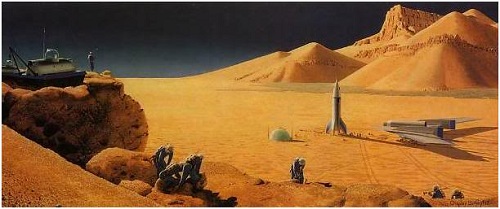
To continue.
Jarvis naturally draws a diagram of the solar system as a way to find agreement with Tweel on their location and again we are clued in to the fact that Tweel – and his species – are as advanced, if not more so than our atomic-powered humans:
“Tweel understood my diagram all right. He poked his beak at it, and with a great deal of trilling and clucking, he added Deimos and Phobos to Mars, and then sketched in the earth’s moon!
“Do you see what that proves? It proves that Tweel’s race uses telescopes—that they’re civilized!”
“Does not!” snapped Harrison. “The moon is visible from here as a fifth magnitude star. They could see its revolution with the naked eye.”
“The moon, yes!” said Jarvis. “You’ve missed my point. Mercury isn’t visible! And Tweel knew of Mercury because he placed the Moon at the third planet, not the second. If he didn’t know Mercury, he’d put the earth second, and Mars third, instead of fourth! See?”
How many of you would have fallen for Harrison’s mistake? I suspect the majority. Weinbaum here offers a perfect example of “showing” rather than “telling”; most readers should arrive at the end of that passage as chagrined as Harrison must have been.
I’ve also grown skeptical of the entirety of Jarvis’ leap, although equating the use of technology with being civilized may be rectified if we think cultured instead of civilized – as civilized is code-speak for not-savage, which is itself code-speak for not western. By substituting culture – by presuming this is what Jarvis actually meant – his statement makes more sense, encompassing as it does all human cultures as well as tool-using, non-human cultures.
However, like the earlier experience of naming names and pointing, this attempt at dialogue also breaks down when they move beyond simplistic concepts. These passages are an excellent set-up for what will come later as Weinbaum uses Tweel’s ability to over-come the communications problems as further proof of his alienness (not to mention Tweel’s appeal; see if you don’t find yourself liking this unlikely alien by the end of the story).
After a bit more attempted communication, Jarvis decides he needs to get some shuteye and turns in. The night is very cold – Jarvis pokes his nose out of his sleeping bag and gets the tip of it frostbitten. When he awakens in the morning, Tweel is gone – but soon reappears as Jarvis is preparing to begin his march. It is evident that Tweel plans on going in the opposite direction Jarvis intends to go, but when Jarvis begins heading off, Tweel accompanies him anyway.
As they begin to travel, Jarvis notes that Tweel is capable of moving much faster by leaping (in a quite disconcerting and non-human manner) but the alien opts instead to join Jarvis in his plodding. This shared experience serves as an analogue to friendship.
As they walk along they talk and Tweel continuously demonstrates his understanding of English words; Jarvis speculates on the apparent differences in their languages and tries to compare Tweel’s to that of the Negritos (Adamanese):
He seemed terrifically amused that the same word meant the same thing twice in succession, or that the same word could apply to two different objects. It set me wondering if perhaps his language wasn’t like the primitive speech of some earth people—you know, Captain, like the Negritoes, for instance, who haven’t any generic words. No word for food or water or man—words for good food and bad food, or rain water and sea water, or strong man and weak man—but no names for general classes. They’re too primitive to understand that rain water and sea water are just different aspects of the same thing. But that wasn’t the case with Tweel
I’ve done a small amount of research into the Negritoes; they’ve largely disappeared these days having intermarried with other, larger, indigenous populations. Their languages are two (or three, depending upon definitions) and they do have some features that make them different from most others; nouns – at least for body parts – require possessiveness for example. You can only say “my head”, “your head”, “her head”, not “a head”.
Judging by my (quick) survey, the Negritoes were a subject of interest around the time Weinbaum wrote this story (1933-1934). It is a bit problematic that he chose to classify them as “primitive” (or has Jarvis do so) – but I think he can largely be forgiven for using that assessment in association with peoples of south east asian origin. That region of the world was still largely unexplored at the time – still the home to “lost” tribes and “primitive” in this usage is seemingly the equivalent of those legends on ancient maps – “here be sea monsters”. The western world still pretty much divided the world into itself (advanced, enlightened, technological) and “primitive savages”, having not yet discovered that what may appear to be primitive can actually be a sophisticated adaptation to local constraints and/or culturally influenced. They’d not yet discovered that different does not have to mean bad or stupid or unsophisticated or even non-technological. (Favoring a camel over a horse may seem ‘stupid’, until one becomes familiar with the desert.) The characterization though is problematically prejudicial in nature.
The two cross Mare Chronium (Sea of Time), wade through a sand storm (Tweel’s adaptations suggest he may be a desert creature) and are approaching Xanthus when clear spheres, like “glass tennis balls” begin floating past them. Tweel points to one of the spheres and says “Rock”. Jarvis fails to gain any insight from this at the time.
They arrive at the cliffs bordering Xanthus where Jarvis is determined to spend the night. As he begins climbing the cliffs at a suitable location, the Ares’ other auxilliary rocket flies by in the distance. Tweel reacts in an excited and agitated fashion, but nothing comes of this. Jarvis settles in for the night and Tweel “stuck his beak into the sand and drew up his legs and arms and looked for all the world like one of those leafless shrubs out there.” This is viewed as protective mimicry and another maybe clue that Tweel has evolved on the deserts of Mars.
In the morning they begin their trek again and soon come upon a line of miniature pyramids. They’re made of miniature bricks, their tops are broken off and their interiors are empty. After several hours of following them through the desert, Jarvis realizes that the individual pyramids are gradually getting larger. Examining some of the bricks, Jarvis speculates that they are made of pure silica and, based on their weathering, that they are very, very old – perhaps fifty thousand years old.
This brief section is another fine example of Weinbaum’s technique; we discover and investigate along with Jarvis. We’re left to wonder and marvel just as Jarvis does. We obtain additional information and clues (more fodder for speculation) in bits and pieces, snippets, as he mosies along through the desert. Weinbaum could have had his pair of travelers stop at the first few pyramids, examine them in detail and deliver explanations all in one exposition (as was not uncommon in contemporary stories). Instead the trek is the primary focus and, like Jarvis, we only pick up additional detail in piecemeal fashion – shape first. Later the dawning realization that they are made of smaller components; still later they they are empty; later still their increase in size, their emptiness and their age. We’re left to ponder for several paragraphs, left to modify our working theory of what is going on as new facts are revealed, new observations made.
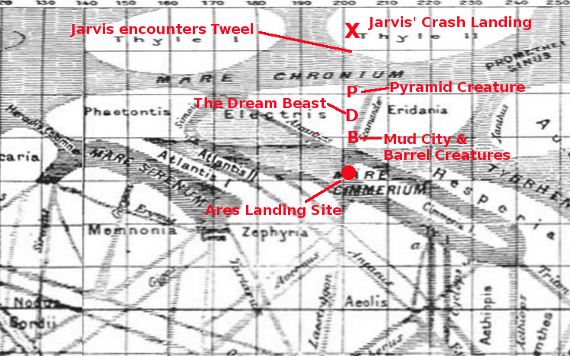
By afternoon of this first day of travel, the silica pyramids have grown to shoulder height and Jarvis tries to question Tweel about them. It is in the following passages that Weinbaum illustrates beyond a shadow of a doubt that Tweel is more intelligent and capable than any of the four representatives of humanity on Mars at the time:
“I tried questioning him. I pointed at a pyramid and asked ‘People?’ and indicated the two of us. He set up a negative sort of clucking and said, ‘No, no, no. No one-one-two. No two-two-four,’ meanwhile rubbing his stomach. I just stared at him and he went through the business again. ‘No one-one-two. No two-two-four.’ I just gaped at him.”<
“That proves it!” exclaimed Harrison. “Nuts!”
“You think so?” queried Jarvis sardonically. “Well, I figured it out different! ‘No one-one-two!’ You don’t get it, of course, do you?”
“Nope nor do you!”
“I think I do! Tweel was using the few English words he knew to put over a very complex idea. What, let me ask, does mathematics make you think of?”
“Why of astronomy. Or or logic!”
“That’s it! ‘No one-one-two!’ Tweel was telling me that the builders of the pyramids weren’t people or that they weren’t intelligent, that they weren’t reasoning creatures! Get it?”
“Huh! I’ll be damned!”
“You probably will.”
“Why,” put in Leroy, “he rub his belly?”
“Why? Because, my dear biologist, that’s where his brains are! Not in his tiny head in his middle!”
This explanatory example also serves to clue the reader in for future encounters with Tweel’s explanations of Mars. We’re given some insight into how Tweel will use his superior intelligence and limited knowledge of English to put across complex ideas. Later in the story the reader will have several other opportunities to figure out what Tweel is trying to say.

So far as silicon-based life forms go: a fair amount of astrobiological brain cells have been directed towards this question over the years and it seems very unlikely that an earth-like Mars would harbor the conditions necessary to support such a life form. Most of the brief surveys I consulted seem to indicate that it might be possible for silicon to act like carbon as those elements relate to life systems, but in order to do so, an environment in excess of 1,000 k in temperature would probably be required. On this score, readers will be able to say that “Weinbaum got it wrong”.
But boy did he get it wrong in a spectacular way! Teeny-tiny pyramids with broken tops gradually growing in size – a line of visible history stretching from one horizon to the other, capped off by an unusual creature (I’ll save the description in case you’ve not read the story); reproduction via floating ‘glass’ eggs; speculation that it is the chemical ‘smell’ inside the eggs that, once exposed to the right mix of elements in the martian sand, will slowly and gradually mature into a pyramid creature – a creature that may have been eating and excreting sand on the Martian surface for half a million years!
After the novelty of the pyramid creature wears off, Jarvis begins to realize just how long his trek is going to be and he becomes morose, not interested in conversing with Tweel, nor doing anything except slogging along through the desert. His thoughts turn to home, hot food and women.
“I jumped to reflections of how nice and home-like even Bornéo would seem after this crazy planet, and from that to thoughts of little old New York…”
In 1934, Borneo was the poster child for the strange, the bizarre, the frightening and the exotic. Anyone reading that line in 1934 would gain an immediate appreciation for how truly alien Mars was, especially when Borneo is associated with New York.
The trek continues and Jarvis spies a dark line on the horizon and recognizes it as a canal he’d crossed during his reconnaissance flight. He now knows that he is approximately one third of the way across Xanthus. His thoughts turn to Fancy Long, a “vision entertainer”, star of the Yerba Mate (coffee?) Hour show, a friend and acquaintance of Jarvis’ who was present at the Ares’ launch.
(Philo Farnsworth gave a demonstration of “television” at the Franklin Institute in Philadelphia in August of 1934: Weinbaum – and most of the rest of the science fiction world – were probably following the developments of television quite closely.)
And suddenly Jarvis sees Fancy Long, waving to him from the rubbery bushes near the canal.
Decades have passed since we were originally introduced to dream beasts; no doubt modern humans would not be taken in so easily – unless perhaps they’d spent an entire day walking across Xanthus….
Jarvis heads off to hook up with Fancy when Tweel stops him and utilizes his knowledge of English to stop Jarvis from unintentionally committing suicide. “No breet, no breet” Tweel says (“no breath”).
Tweel pulls out his gas pistol; Jarvis naturally tries to intervene but relents as it begins to dawn on him that Tweel was trying to tell him that the Fancy he saw was not the Fancy he knew. Tweel shoots the apparition and the Dream Beast, black tentacles and all, appears in Fancy’s place.
We’ve now come full circle: Tweel has saved Jarvis from the exact same creature that Jarvis saved Tweel from at the opening of this adventure. Perhaps Tweel decided to follow along with Jarvis out of a sense of obligation. Perhaps Tweel recognizes that Mars is a dangerous place, and more-so for a non-native.
But, even after balancing the scales, Tweel continues to accompany Jarvis. Perhaps his ethics are as evolved as his intelligence.
The discourse following this scene is interesting as Jarvis and the rest of the crew speculate on how it was that Tweel recognized the Dream Beast (Fancy) for what it was; after all, Tweel had been trapped by it himself earlier:
“How’d your friend know?” asked the captain abruptly.
“Tweel? I wonder! Perhaps he was thinking of something that couldn’t possibly have interested me, and when I started to run, he realized that I saw something different and was warned. Or perhaps the dream-beast can only project a single vision, and Tweel saw what I saw—or nothing. I couldn’t ask him. But it’s just another proof that his intelligence is equal to ours or greater.”
“He’s daffy, I tell you!” said Harrison. “What makes you think his intellect ranks with the human?”
“Plenty of things! First, the pyramid-beast. He hadn’t seen one before; he said as much. Yet he recognized it as a dead-alive automaton of silicon.”
“He could have heard of it,” objected Harrison. “He lives around here, you know.”
“Well how about the language? I couldn’t pick up a single idea of his and he learned six or seven words of mine. And do you realize what complex ideas he put over with no more than those six or seven words? The pyramid-monster—the dream-beast! In a single phrase he told me that one was a harmless automaton and the other a deadly hypnotist. What about that?”
“Huh!” said the captain.
If you think about it, A Martian Odyssey is not so much Martian travelogue as it a discussion of the nature of alien intelligences; speculation and ruminations on Tweel’s ways of thinking permeate the story.
Continuing: Weinbaum allows for a pause in the narrative at this point, giving his no doubt by-now-breathless readers a chance to catch up – but he also makes sure to offer another hook to hold the reader’s interest: Jarvis says “I thought the dream-beast and the silicon-monster were the strangest beings conceivable, but I was wrong. These creatures are still more alien, less understandable than either and far less comprehensible than Tweel…”
Wow. I mean, WOW. We’re on Mars! We’ve met a friendly intelligent alien who remains incomprehensible to us! We’ve met ambulatory grass, flying glass soap bubbles, a fifty thousand year old silicon creature (making pyramids on Mars that some claim to still see to this day!) and a black, tentacled monster that can make you see your fondest desire…and there’s still more?!
Read some other planetary romances of the same period and you’ll find alien planets, one alien (or alien species) and, usually, a handful of nifty tech gadgets. All usually compressed into the first third of the story so that the reader has the background necessary for the remainder of the plot – usually involving rescuing the girl from the clutches of the evil people, sometimes in league with the aliens, sometimes against them.
Here we see Weinbaum’s rollercoaster approach revealed (the same technique is present in the sequel to A Martian Odyssey – Valley Of Dreams and the “Ham” Hammond stories that take place on Venus. They do make the stories a thrill ride; they also help conceal things that a reader might otherwise question – which we’ll get to at the end of this article.
More of Tweel’s technology (his gas pistol) and the nature of intelligence is discussed during this interlude. Jarvis continues to make a case for friendly (and advantageous) engagement.
We’re then introduced to the Mud City and its queer inhabitants (in 1934, ‘queer’ had not yet acquired additional definitions), the barrel people: “It looked rather like a barrel trotting along on four legs with four other arms or tentacles. It had no head, just body and members and a row of eyes completely around it. The top end of the barrel-body was a diaphragm stretched as tight as a drum head, and that was all.”
Perhaps the strangest and most unique thing about the barrel creatures (who use visible technology and build cities) is that they completely ignore Jarvis and Tweel. This may be another unique innovation by Weinbaum who manages to take alienness even farther down the rabbit hole.
Jarvis – typical man of action – changes the equation by stepping in front of one of the bustling creatures.
Hah! Cliffhanger conclusion to part two in typical pulpy fashion. Stay tuned until next week when we find out what really happened in Mud City and why Jarvis keeps on rubbing his nose!

 (
(
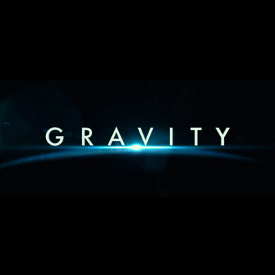



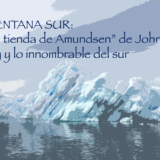

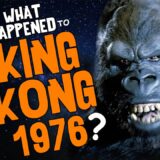

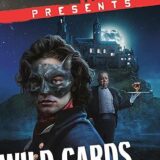
Recent Comments